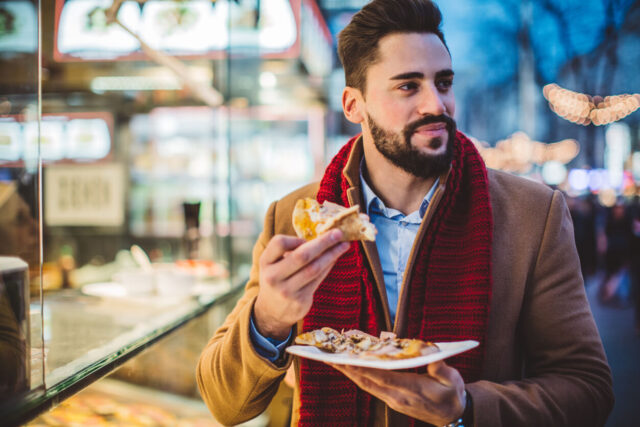Street food is a delicious way to experience the local culture, meet interesting people, and see the sights and sounds of a country. However, it can be difficult to enjoy street food safely if you’re looking for a cheap, healthy, and tasty meal.
There’s nothing more fun than traveling the world—but it can also be the most expensive. Getting sick on the street can easily cost you a fortune, but the best way to avoid it is with a well-planned itinerary.
For a lot of us, cheap food in the developing world is a risky proposition. The food is made by street vendors, so you can’t just order a meal from a menu. And when you do order a meal, you have no idea what you’re getting. That’s why I’m always surprised when I hear people say they’ve avoided sickness by eating street food. You can’t go into a street market and say, “I’m a Westerner, I’d like a little bit of everything.”
One of the most often inquiries I receive from readers is, “How can I sample cuisines from all over the globe and/or consume street food without becoming sick?” This question comes from readers all around the world, and it’s what prompted me to create a lengthier book on the subject.
Street food is a huge part of why I travel, and it’s a great way to take in the sights and sounds of the city. This article is long overdue, given that my life revolves on food and my readers want to know how to eat properly when traveling.
Many people who read this blog are surprised to learn that I did not grow up fascinated with food. When I tell people that eating used to be a necessity rather than a pleasure, they chuckle. When I was diagnosed with celiac disease, though, I had to begin paying close attention to each component when eating. This required arranging a lot more around meals when traveling, which soon led to new interactions with food sellers and the need to ask a lot more questions. What began as a duty to keep me safe quickly evolved into my current fixation with devouring the whole globe.
My culinary adventure may have started with severe dietary constraints, but it now exists in a wide open field of inquiry. Food is the most in-depth and gratifying lens through which I can learn about a new location.
How to Eat Street Food and Enjoy It Without Getting Sick

My pre-trip culinary research consisted of reading How to Shit Around the World, a book I strongly recommend for its amusing anecdotes, useful recommendations, and the overall pleasure of reading it on a crowded train. Despite reading the book from beginning to end, I traveled to South America, ate a tepid llama empaada, and puked for four days straight as I crawled through Bolivia’s Salar de Uyuni.
“Ok, rule number one is don’t eat your favorite animal,” I told myself.
Other times, I did become ill despite openly disobeying the book’s instructions. However, eating street food was seldom the cause, and it irritates me when people shun street food because they believe restaurants are safer.
“But I didn’t even eat the street meat,” remarked a friend who just became ill in Chiang Mai. With a shake of my head, I expressed my disappointment. “It’s most likely why you got sick!” He went to a tourist eatery during off-peak hours instead. There were two blows to his stomach right there.
I wanted to write an article on how I prevent getting ill from food when traveling as a big proponent of eating on the street. I understand that people are concerned about food contamination, and the information available suggests that eating out is safer. With a few exceptions, I firmly disagree.
Once you know what to look for and when to eat, you’ll be well on your way to preparing wonderful meals that double as experiences as well as supper. Although no advise is foolproof, this is what has worked for me.
In my years of travel, I’ve had pneumonia, lung damage, a fractured toe, and dengue fever, as well as fallen from a motorcycle when a truck full of cabbages and pineapples showered veggies down on me. Mind you, not all at once. Even when spread out, it’s still tough. Food poisoning, on the other hand, was very uncommon. I’ve only had food illness a few times in my 7.5 years of travel at the time of writing this article. The most recent instance occurred in 2011, when I ate a yoghurt at a 7-11 in Thailand.
That’s correct, despite eating a lot of street food, I haven’t had food illness since 2011.
During my 2013 trip to India, I was able to accomplish this accomplishment by eating street cuisine. I have celiac disease, so if I get ill from food, it’s usually due to gluten – joint pain, mood swings, and stomach issues during the first several hours. I can tell the difference: I haven’t hugged the toilet for a long time since 2011, and glutening isn’t as bad as it sounds.
Here’s how I avoided getting ill when eating street food:
1. Take a look at how long the lines are

Lunchtime food vendors in Mexico City
Everyone advises you to eat at the booths with the most locals in queue. This remains excellent advice! But I usually add that it’s crucial to keep an eye on who’s ahead of you in line. Because I know my stomach isn’t as tough as a cab driver accustomed to fast street meats, I try to avoid street stalls that have both ladies and children in line.
When the client base is diverse, it generally indicates the stall has been well inspected and is safe for everyone. Yes, a lengthy line of males is still preferable than crickets and an empty stall, but if you have an option, you should go with the ladies and children in line.
2. Return to school for lunch
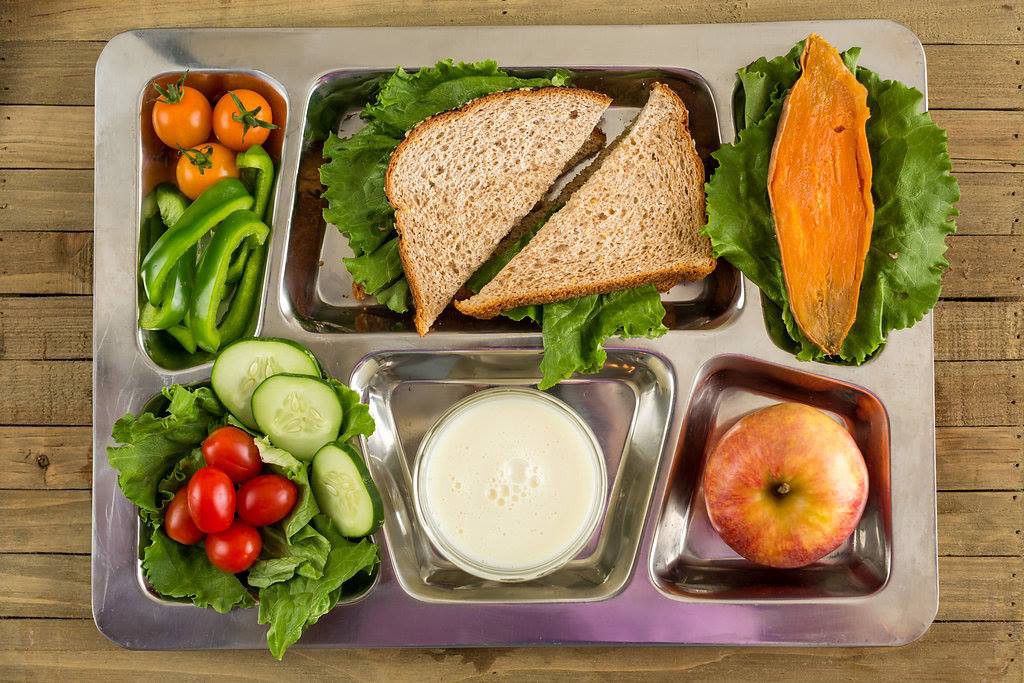
Go to the local university and locate a place to dine nearby for an inexpensive lunch. Students are a hungry lot, thus some of the amusing east meets west variants often appear here. There were “pho burgers” in Saigon, but there were also inexpensive booths serving local favorites to a revolving cast of students. It won’t be the most wonderful dinner you’ve ever had, but it will be local, quick, and inexpensive. However, since the food will have been out for the day, it is not advised for dinnertime.
3. Make use of a kitchen that is transparent
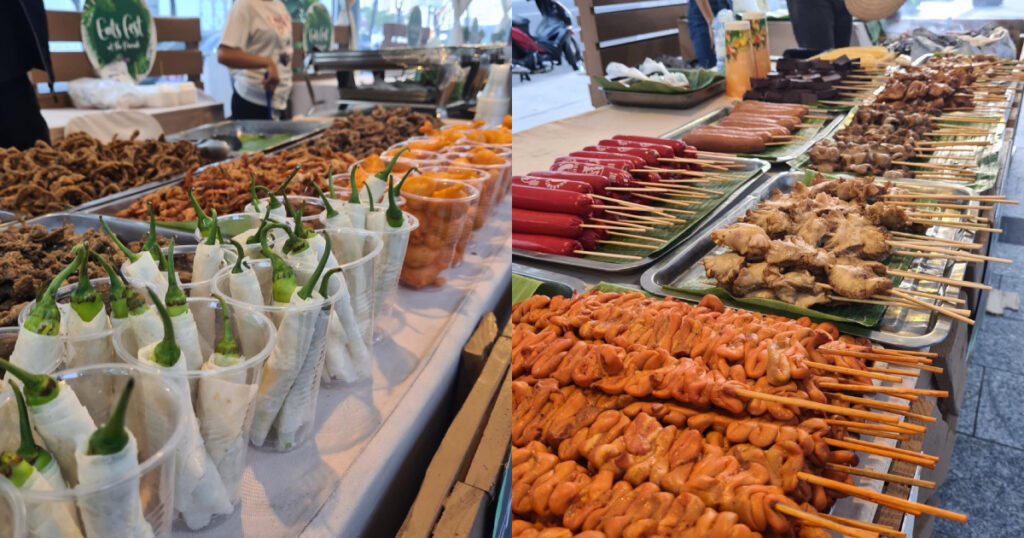
I feel like I have more control with a street stand, as I said at the beginning, since I can see how the food and money are handled. I won’t dine there if someone is handling the money and then the raw food. If plastic gloves are used for food preparation, why are they kept on while handling money? It’s the same – it’s a miss. In two-party booths, one person is usually in charge of the cash and cooking, while the other is in charge of the preparation. Because they are kept separate, this is a solid bet.
Basically, use your senses to help you decide where to dine.
That’s not to say I never go to a restaurant! However, in cities with a strong street food culture (such as Mexico City, Saigon, or Bangkok), I typically eat all of my meals on the street.
4. Cards with translations for individuals with dietary restrictions
I have celiac disease, and one of the reasons I eat on the street is that I can make changes to the dish as it cooks rather than depending on pre-made sauces that might make me ill. I created my own translation cards since the ones I purchased or downloaded were inadequately comprehensive and made me nauseous. Many merchants, for example, are unaware that wheat flour is included in soy sauce, hoisin sauce, and oyster sauce. Each card is translated twice and studied by a celiac with a passion for food.
My celiac restaurant cards and accompanying lengthy guides for countries all over the globe may be found here.
Friends with peanut allergies also carry translation cards, and it’s important to do your homework to know which ingredients to avoid. Select Wisely or Allergy Translation are good places to search for nut allergy or shellfish allergy cards.
Select Wisely offers a strong worded option for people with more life-threatening allergies, and these cards go a long way toward getting your message through — definitely more so than my original “gesture feverishly while imitating feeling sick over food.” If you’re worried about eating food you can’t identify, carry a Point It Dictionary with you. When on a lengthy train journey, it’s also enjoyable to trade words in your respective language. I’m also working on my own celiac cards, which will have very comprehensive comments suited to particular nations.
5. Cutlery as a scapegoat

It’s crucial to keep an eye on how the silverware is cleaned.
Even if the meal is healthy and fresh, cutlery may be a source of germs. I have baby wipes on hand in case I need to clean older wooden chopsticks or utensils that don’t seem to be well-washed. You’ll receive some strange stares, but it’s a good way to make sure the silverware is clean. Cute, portable chopsticks will suffice as an alternative. These are the ones I always have with me.
I seldom utilize this additional cleaning-or-chopsticks method, but it’s nice to have the choice, particularly when traveling outside of cities. A bonus: if you forget toilet paper and need to use the restroom, you can always rely on your baby wipes!
6. Markets in the morning to start the day
Dong Ba market in Hue in the morning.
When readers ask where they should start with street food, I usually recommend going to a bustling neighborhood produce market. Whether it’s the many rotating markets surrounding Inle Lake in Myanmar, morning food markets in Mexico City, or a side excursion to a tiny hamlet, if there’s a produce market, there’s typically some freshly cooked food. There is a lot of turnover since these booths are set up to serve hungry customers. I’ve discovered that starting at these markets and trying the items one by one is a great way to get a taste of a scary new culinary range.
Furthermore, many individuals choose hotels that offer breakfast or a more Western breakfast with yoghurt and fruit. While it is an option, I would strongly suggest eating at a market instead. If you like the meal, you may ask the seller where they are during the day or, if they don’t offer that cuisine, where they would recommend you try it instead.
Overall, markets are a great method to re-energize your taste buds and other senses.
7. When do the natives eat? That is the time when you should be eating.

Eat when the locals eat! Street booths wander about as people do; eat when the locals eat!
One piece of advise I offer to visitors, particularly those from Europe who eat later than North Americans, is to attempt to eat at the same times as the locals. I understand that 6 p.m. meals or 11 a.m. lunches aren’t typical meal times for most people, but if that’s when the locals eat, it may be extremely beneficial to your stomach.
This is particularly essential when meals are prepared and served buffet-style, since you want to consume them as soon as possible, before germs begin to develop. This involves adjusting my meal timings a little, but it’s worth it since the food is hot, fresh, and doesn’t make me ill.
8. Always, always, always, always, always, always, always, always, always, always, always, always, always, always,
Do you remember my llama empaada? Yes, I completely ignored this advise. Despite the fact that the core of the snack was chilly, I completed it. DON’T BE LIKE ME. If it isn’t completely done and is intended to be a hot dinner, request that it be cooked a little longer.
Over the years, I’ve become more daring, eating raw shrimp meals in Thailand and fresh herbs in areas where I don’t know where the water comes from. This is a result of my own risks and my knowledge of what my stomach can withstand. Fortunately, despite eating street cuisine in North India, I did not get ill. Why? I made sure everything was completely cooked and freshly prepared, and my mother and I chose to eat at the same times as the natives. (I must admit, I was shocked since based on my friends’ experiences, I expected to be ill at least once, but thankfully I did not!)
9. Be wary of ice or fruit shakes made with tainted water.
It’s important to pay attention to how fruit shakes are prepared. Mrs. Pa, a Chiang Mai resident, uses only safe water and ice.
In Saigon or Bangkok, where filtered water is subsidized and readily accessible to the general public, I order beverages with ice. I’ve also spent a lot of time in both places and have never been ill because of the water or ice. When I go outside of cities, though, I try to avoid ice or fruit shakes with ice since I don’t know how the ice is produced. If there’s one item that can be easily removed from a situation where the water isn’t safe, it’s ice. Fruit shakes in Laos killed a lot of my pals since the ice wasn’t produced with purified water. It’s best to be safe than sorry, particularly if you’re always on the go.
10. Have you ever tried being vegetarian for a while?
If I’m truly worried about food poisoning, I’ll avoid meat in certain places. We ate street food in India when I brought my mother there, but mostly vegetarian fare. When we did eat meat, we were warned that we were taking a chance, but we chose to go ahead and do it anyway since we were thrilled about the meal. Even the most carnivorous of friends will temporarily abstain from eating meat in areas where the water is highly polluted.
11. If you don’t peel your fruit, you won’t be able to eat it.
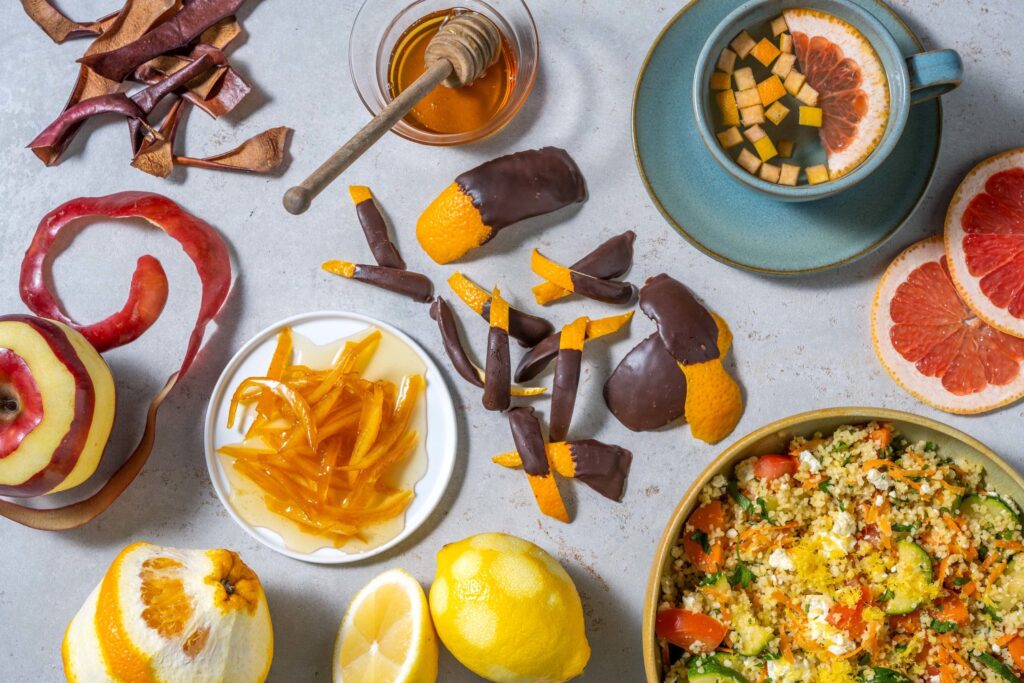
In Vietnam, rambutan is known as the “hairy fruit.” These are simple to peel and delicious to eat as a snack.
I would only eat peelable fruit until you are accustomed to a new area and its germs. Bananas, papaya, mango, rambutan, mangoesteens, and other delectable fruit with a peel abound, and your stomach will thank you. Avoid eating lettuce or fruit with the peel (like apples). While strawberries are appealing, they should be avoided in nations with severe pollution and a shaky water supply.
12. Sauces may be a pain to work with.
I like a nice table condiment, but sauces may also be the source of traveler dissatisfaction. The reason for this is that many locations keep them at room temperature, which allows germs to grow over time. I base my sauce use on the quantity of sauce consumed by other diners: if it’s a dish where condiments are freely utilized (e.g., bun rieu soup in Vietnam, where skipping the wet chili paste would be sacrilege), I go for it. If there is a crust on the edge of the sauce or just a few drops are used at a time, I will take my time tasting the salsas or sauces to verify they have not been left out for an extended period of time.
I’m presently in Oaxaca, Mexico, and I’ve had no problems eating sauces for all of my meals thus far. I’ve also gone to locations where there were a lot of people and families, and I’ve seen nearly everyone slather a lot of sauce on their meal.
What happens if you do end up with food poisoning?
Even the most iron-clad stomachs may be felled by a culinary misadventure, so the advice above isn’t a guarantee. It’s all part of the danger that comes with traveling.
If you have food poisoning or a gastrointestinal ailment, you should see a doctor very once. Many of them are acquainted not just with traveler’s diarrhea but also with any viruses that may still be prevalent in the area. I don’t use Imodium unless it’s an extreme emergency, such as a lengthy bus trip combined with food illness.
I would advise avoiding quickly rehydrating with sweetened sport electrolyte drinks, since I’ve found that the high amounts of sugar in such beverages make me feel worse if the bacteria are still present in my system. Instead, I eat a constant diet of oral rehydration salts, rice (bread may be used as a replacement if you are not gluten-free), and bananas. Drink as much water as you can.
The World Health Organization recommends trioral oral rehydration salts, but if you don’t have them, I’ve never encountered a pharmacy that won’t have a variation of these pills in stock in my years of travel. They are unpleasant to consume, but they are necessary if you get ill.
See my World Travel Resources Page for additional packing suggestions for your trip.
What else should I bring to help my stomach?

Probiotics: I would also suggest taking probiotics that don’t need to be refrigerated while traveling. When I’ve been ill, they’ve helped me get back on track, and I feel better when I take them. For years, I’ve been using Hyperbiotics Pro-15 probiotics, time release pearl capsules, which have been with me for a few years. They include some of the strains I wanted to be sure I ingested. I understand that probiotics aren’t for everyone, and that’s OK; but, as usual, I’m sharing my own experiences. This article from the University of California at Berkeley provides an overview of the benefits and drawbacks of probiotics. This D-Lactate free shelf-stable solution containing L. Rhamnosus GG, which helps downregulate mast cells, is strongly recommended for individuals with allergies or histamine intolerance. Some probiotic strains enhance histamine production while others decrease it. You need a reducer in a new setting, and this is an excellent mix. The
Activated Charcoal: I use activated charcoal when I’m feeling nauseous, if I’m suffering from a hangover, or if I’ve inadvertently consumed gluten and want to minimize the effects. It has been very beneficial to me, and I never leave home without it, even while traveling in North America. These are available on Amazon, in 7-11s in Thailand, and in most natural health shops. They’re extremely cost-effective.
Digestive Enzyme: As a celiac, I find them helpful, but they’re also carried by pals who don’t have any dietary restrictions. This product contains DPP-IV (Dipeptidyl Peptidase IV), which aids in the digestion of gluten and casein. To be clear, I don’t use them to consume gluten; rather, I use them when I accidentally eat gluten and get extremely ill. (For celiacs, there is no advice on whether this may be used to assist digest and consume gluten on purpose; it’s an emergency tool for me, not a cure for the condition.) A broad digestive enzyme like this would usually sufficient for non-celiacs.
Ginger Tea: You can generally locate fresh ginger when traveling, but I carry a couple of these ginger root teabags with me just in case. They’re relaxing, and the warm tea helps me relax before bedtime.
As a single traveler, I am most lonely when I am ill, therefore I am thankful for technology that allows me to communicate with friends no matter where I am!
Resources & Inspiration For Food Lovers
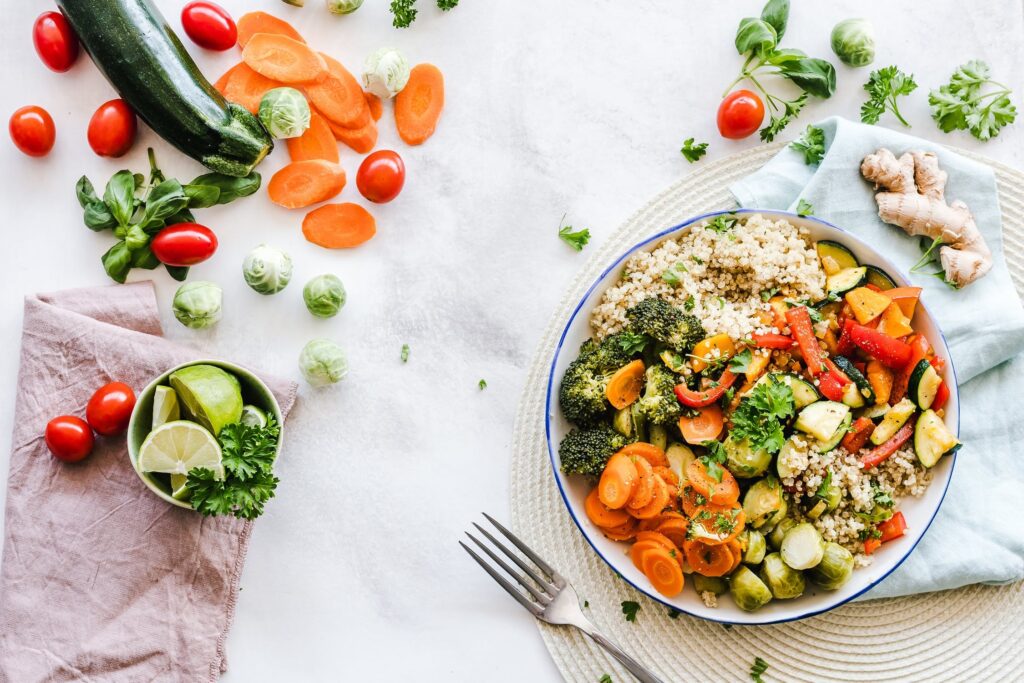
I wanted to wrap off this article with some of the books and websites I’ve returned to time and time again to feed my passion for food. The first is useful, but the others are recommended because of the beauty of the settings they conjure up in text and photographs.
Reading List
How to Shit Around the World is a doctor’s guide on keeping healthy when traveling, both in terms of diet and other factors. Written with wit and pleasure by someone who has traveled the globe.
Graham Holliday, well known for his wonderful Noodle Pie blog, has written a new book about his many amazing dinners on the streets of Vietnam, titled Eating Vietnam. This novel was fantastic to read for someone who likes Vietnamese cuisine, particularly eating it on those little blue stools on the side of the road.
Chiang Mai, Mexico City, Mumbai, and Buenos Aires are all featured in Lucky Peach’s Street Food edition.
Lonely Planet’s The World’s Best Street Food is a big food book that also serves as a guide. It describes the kind of dishes found in each street food hotspot, how they are prepared, the main ingredients used, and the narrative behind them, before providing recipes for you to try at home.
Heat: I read this book years ago, but it’s still one of my favorites, and it’s one of those novels that I was sorry to see close. Bill Buford’s experiences in Tuscany begin when he chooses to apprentice in Mario Batali’s kitchen, where he learns to be a line cook, a pasta maker, and a Dante-quoting butcher.
Fuchsia Dunlop’s account of her time dining in China, Shark’s Fin and Sichuan Pepper, was so beautifully written that I couldn’t stop reading till I completed it. A fascinating look at not just her travels but also Chinese society as viewed from the outside.
Spice: A Temptation’s History: This history of spices and the spice trade, written by Jack Turner, a Brit with a wonderful sense of humour, takes you through the centuries and into the thoughts and palates of explorers from hundreds of years ago to the current day.
Mark Kurlansky’s Salt: A World History is required reading for anybody interested in the history of the world’s most neglected white powder, and how its usage altered the way humans functioned in the world and the extent to which we were able to explore it by sea.
I have three favorite cookbooks.
Latin American Street Food: The finest tastes from Latin America’s markets, beaches, and roadside stalls, from Mexico to Argentina, in easy-to-make dishes.
Thai Street Food by David Thompson: A must-have for anybody who like Thai cuisine, this cookbook/travelogue is a must-have for your shelves. It’s a little hefty, but you’ll like it.
Burma: Rivers of Flavor is a book I’ve given to friends and family because Naomi Duguid depicts the colors, flavors, and intriguing history of Burma in a wonderful way (Myanmar).
Websites and Podcasts to Learn From in the Food Industry
Nothing makes me happier than knowing about the tales and history behind the things I’m eating. Here are a few websites that I often use as jumping off places for my culinary adventures:
Last but not least, some motivation! Netflix’s 2019 documentary series honoring Southeast Asian street cuisine and the people who create it. The series, from the producers of Chef’s Table, will focus on the lives and stories of the chefs, as well as their cuisine. Thailand, India, Taiwan, Japan, South Korea, Singapore, Indonesia, the Philippines, and Vietnam are featured in the first season episodes.
See this Eater article for a list of the foods and chefs featured. Start here for the whole series.
Hopefully, after reading this advice, you will not be completely turned off by street food, but rather will choose wisely and enjoy not just the explosion of flavors on your tongue, but also the beautiful anarchy of sitting on the street and observing the scene while eating.
Good luck with your meal!
Eating street food is a great way to explore a new city, get a taste of what’s on offer, and meet new people. One way to do this is by taking advantage of legal visas, called “B1/B2/B2 (tourist) visas”. These visas allow you to stay in the country for up to 6 months, and it’s a great way to save some money too.
The first thing you have to do is apply for a tourist visa, which will only take a couple of days. You’ll then be issued with a B1/B2/B2 visa, which allows you to stay in the country for 3 months.. Read more about prepare to eat street foods healthy or unhealthy and let us know what you think.
Frequently Asked Questions
How can I eat Indian street food without getting sick?
You can eat Indian street food without getting sick by eating at a restaurant that is certified and licensed.
Is it OK to eat street food?
Street food is generally safe to eat, but its always best to check with your doctor before eating something new.
Is it safe to eat street food in Mexico City?
It is safe to eat street food in Mexico City.

